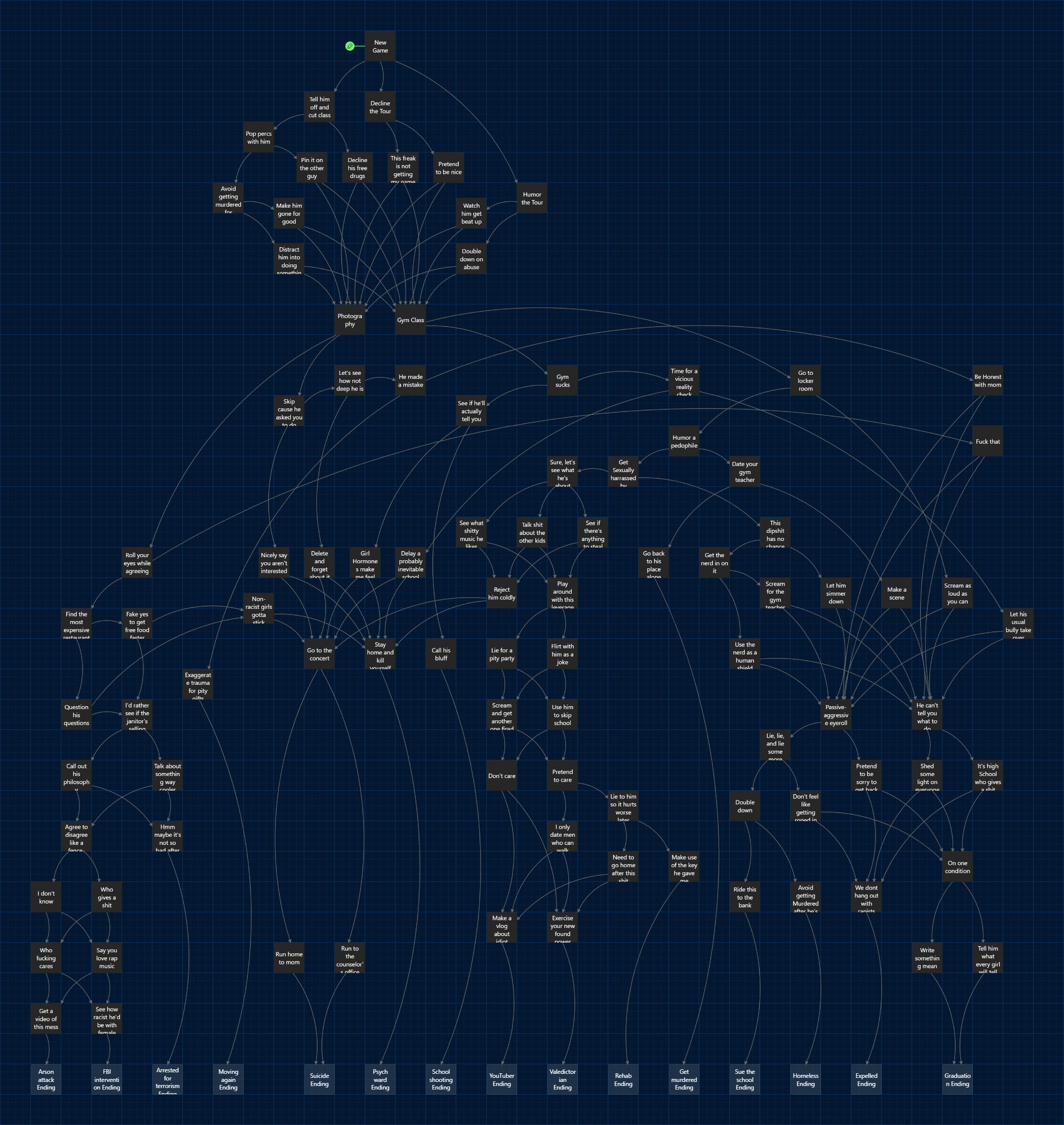Choice architecture in interactive fiction isn't just about presenting options — it's about creating a decision-making environment that feels natural, meaningful, and sustainable throughout a player's journey. The best IF games understand that how you present choices matters as much as the choices themselves.
Modern interactive fiction has evolved beyond simple binary decisions to embrace sophisticated frameworks that guide players through complex narrative landscapes without overwhelming them. The design principles behind these systems reveal why some games create memorable experiences while others leave players clicking through dialogue trees mechanically.
Signposting Without Spoiling
Effective choice architecture provides enough context for informed decisions without telegraphing outcomes. Players need to understand what their choices represent thematically and emotionally, even if they can't predict specific consequences.
Consider how "The Outer Worlds" handles conversation options. Instead of generic "Good/Neutral/Evil" indicators, choices reflect character attributes and worldview. A "Corporate" response option tells you more about your character's mindset than the specific words you'll say. This approach lets players make decisions aligned with their intended character development without spoiling narrative surprises.
The key is emotional honesty in presentation. Players should understand the spirit of their choice — whether it's compassionate, pragmatic, or rebellious — without knowing exactly how other characters will react. This balance preserves agency while maintaining narrative tension.
Preventing Choice Paralysis
Choice fatigue is real, and it kills narrative momentum. When players face too many options too frequently, decision-making becomes mechanical rather than meaningful. The solution isn't fewer choices — it's smarter choice distribution.
Successful IF games create rhythm between major decision points and periods of narrative flow. "Disco Elysium" masterfully alternates between complex dialogue trees requiring careful consideration and streamlined sequences that advance the story efficiently. Players get time to process previous choices before facing new ones.
The "3+1" rule works well in practice: present three core options representing different approaches, plus one alternative that subverts expectations. This gives players meaningful variety without overwhelming them with too many similar choices.
Balancing Freedom and Clarity
Players want agency, but they also want to understand their options. The challenge lies in presenting complex choices clearly without oversimplifying them. Visual design plays a crucial role here — typography, spacing, and color can communicate choice weight and consequence scope.
Some games use visual cues to indicate choice permanence. Dialogue options that will close off future paths might appear in different colors or with warning indicators. Others use text length as a signal — brief responses for quick acknowledgments, longer text for weighty decisions that require more consideration.
The most effective approach combines consistent visual language with contextual flexibility. Players learn to read the interface, understanding when choices matter most while still leaving room for surprises and subversion of established patterns.
Weighting Decisions Appropriately
Not all choices should carry equal narrative weight, but players need to understand which decisions matter most. Poor choice architecture treats conversation about breakfast with the same interface gravity as life-or-death moral dilemmas.
Games like "Mass Effect" pioneered visual distinction between casual responses and major decisions. Paragon and Renegade choices used different visual treatments, signaling their importance to character development and story progression. Players could engage in light banter without worrying about accidentally triggering major plot consequences.
This hierarchical approach to choice presentation helps players modulate their emotional investment appropriately. Small talk flows naturally, while major decisions receive the careful consideration they deserve.
Interface Elements That Support Decision-Making
Modern choice architecture leverages UI design to enhance player comprehension without breaking immersion. Hover states can provide additional context. Color coding can indicate character mood or relationship status. Timer elements can create urgency when appropriate.
Some games experiment with showing preview text for dialogue choices — letting players see the first few words their character will say. This bridges the gap between player intention and character expression, reducing the frustration of choices that don't match player expectations.
The most sophisticated approaches make interface elements feel like natural extensions of the game world rather than external overlays. When UI supports narrative rather than competing with it, players can focus on meaningful decision-making rather than interface navigation.
The Invisible Architecture
The best choice architecture becomes invisible to players. They don't think about interface design or decision frameworks — they simply make choices that feel natural and meaningful. This invisibility is the result of careful design that respects both player agency and narrative flow.
When choice architecture succeeds, players remember the decisions they made and their consequences, not the systems that presented those decisions. They recall moral dilemmas, character relationships, and story outcomes — the human elements that make interactive fiction compelling.
As interactive fiction continues evolving, the challenge remains constant: creating decision-making environments that feel as natural as real conversation while supporting the complex narrative structures that make the medium unique. The games that master this balance create lasting emotional connections between players and stories.
